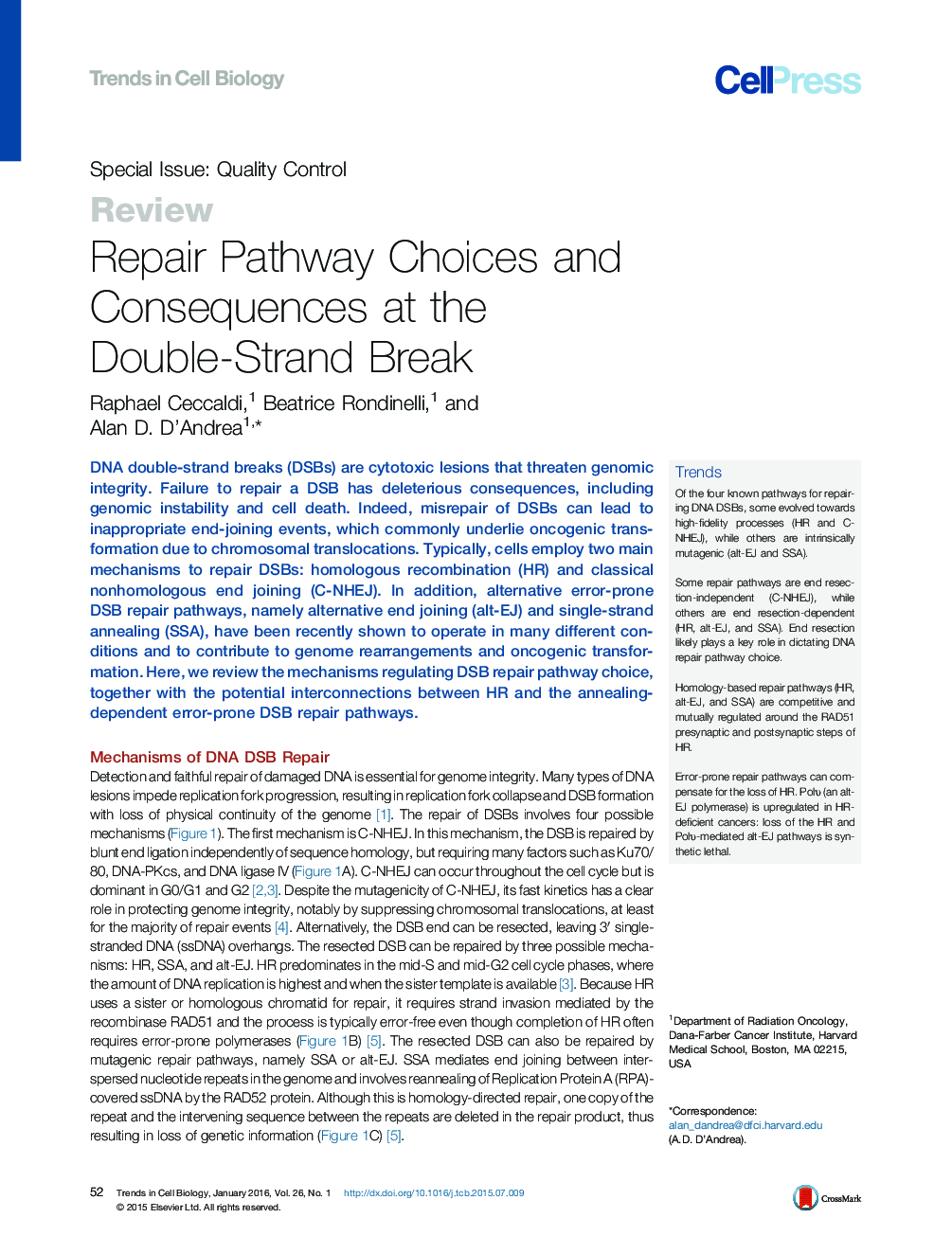| Article ID | Journal | Published Year | Pages | File Type |
|---|---|---|---|---|
| 2204329 | Trends in Cell Biology | 2016 | 13 Pages |
DNA double-strand breaks (DSBs) are cytotoxic lesions that threaten genomic integrity. Failure to repair a DSB has deleterious consequences, including genomic instability and cell death. Indeed, misrepair of DSBs can lead to inappropriate end-joining events, which commonly underlie oncogenic transformation due to chromosomal translocations. Typically, cells employ two main mechanisms to repair DSBs: homologous recombination (HR) and classical nonhomologous end joining (C-NHEJ). In addition, alternative error-prone DSB repair pathways, namely alternative end joining (alt-EJ) and single-strand annealing (SSA), have been recently shown to operate in many different conditions and to contribute to genome rearrangements and oncogenic transformation. Here, we review the mechanisms regulating DSB repair pathway choice, together with the potential interconnections between HR and the annealing-dependent error-prone DSB repair pathways.
TrendsOf the four known pathways for repairing DNA DSBs, some evolved towards high-fidelity processes (HR and C-NHEJ), while others are intrinsically mutagenic (alt-EJ and SSA).Some repair pathways are end resection-independent (C-NHEJ), while others are end resection-dependent (HR, alt-EJ, and SSA). End resection likely plays a key role in dictating DNA repair pathway choice.Homology-based repair pathways (HR, alt-EJ, and SSA) are competitive and mutually regulated around the RAD51 presynaptic and postsynaptic steps of HR.Error-prone repair pathways can compensate for the loss of HR. Polθ (an alt-EJ polymerase) is upregulated in HR-deficient cancers: loss of the HR and Polθ-mediated alt-EJ pathways is synthetic lethal.
